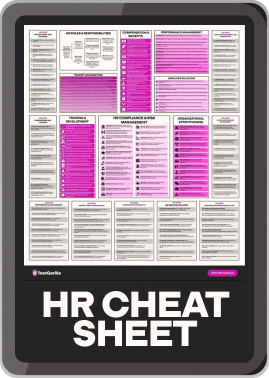6 tricky Elixir developer interview questions to ask when hiring
Hiring the right Elixir developer can make or break your architecture. From managing millions of lightweight processes to designing fault-tolerant supervision trees, Elixir demands more than syntax memorization – it requires deep fluency in concurrent, functional systems.
Elixir coding tests combined with strategic interview questions help uncover whether candidates can build scalable applications, not just write code.
At TestGorilla, we believe smarter hiring starts with better screening. Below, we’ll discuss tricky, targeted Elixir developer questions to support confident hiring decisions and prevent dreaded mis-hires.
Why Elixir developers are hard to screen
Elixir’s popularity is rising, but it remains a niche skill – many developers come from Ruby or JavaScript and are self-taught in the language. While they may grasp the syntax, real-world Elixir proficiency involves far more: building concurrent systems, using OTP behaviors effectively, and architecting fault-tolerant services. These are difficult to assess with traditional interviews or surface-level Q&A.
On top of that, Elixir’s functional programming model introduces unique expectations – for instance, recursion, immutability, and pipeline chaining need to be second nature. A candidate might breeze through a simple quiz but struggle to structure a supervised GenServer tree or debug message-passing issues. That’s why screening for true Elixir fluency requires more thoughtful, hands-on evaluation.
As Tsvetelina Nasteva, HR Manager at Casinoreviews.net, explains:
“A lot of candidates are strong on syntax but shaky on patterns. Language familiarity is one thing. I care more about whether they’ve actually solved problems with it in a working product. I don’t need someone who’s memorized how to use spawn_link. I’d rather hear a story about a tricky bug they fixed in production and what they learned about supervision trees in the process.”
Her approach highlights the gap between surface-level fluency and real-world Elixir readiness – and why deeper screening matters.
What to evaluate in an Elixir developer
If you’re hiring someone to write resilient, reusable code in a highly concurrent, functional environment for maintainable applications, then evaluating an Elixir developer means looking beyond language syntax. Start by assessing their grasp of functional programming principles – pure functions, recursion, immutability, and pattern matching should come naturally to them.
Next, test their understanding of concurrency using Elixir’s abstractions: Processes, Tasks, Agents, and GenServers. Strong candidates will also know how to design robust supervision trees using OTP principles, making their applications fault-tolerant and self-healing.
For advanced roles, probe their experience with macros and metaprogramming. While powerful, these features should be used judiciously and with a focus on clarity.
Finally, evaluate code readability and test practices (e.g., ExUnit), especially if they’ve worked with Phoenix. Bonus points if they’ve built distributed systems or used LiveView for real-time interfaces. These insights will help you separate those who’ve dabbled in Elixir from those who can own production-ready codebases.
The best insights on HR and recruitment, delivered to your inbox.
Biweekly updates. No spam. Unsubscribe any time.
6 tricky Elixir developer interview questions (and what to look for)
1. What is the role of a GenServer in Elixir, and how do you decide when to use one?
Why this is a good question: GenServer is one of the most common OTP behaviors used in Elixir to handle stateful, concurrent processes. This question assesses whether candidates understand not only how to use GenServer but also when and why to use it.
It also allows interviewers to assess the candidate’s technical skills in managing concurrent states with fault isolation and recovery in mind. It also surfaces their grasp of OTP patterns and process supervision.
What a strong answer looks like: Great candidates will explain that a GenServer is a generic server process used to encapsulate state and behavior in Elixir. It handles multiple tasks/functions, such as synchronous (call) and asynchronous (cast) messages, and is often used for tasks like caching, background computation, or managing connections. This efficiency stems from BEAM's use of lightweight processes, which enable thousands of tasks to run concurrently without requiring shared memory.
They should mention that GenServer is part of the OTP framework and is designed to integrate cleanly with supervision trees. A thoughtful answer will note that while GenServer is powerful, it's not always necessary. For simple state management, an Agent might suffice.
What to listen for:
Understanding of handle_call/3 and handle_cast/2
Recognition of GenServer’s fit in supervised systems
When not to use GenServer (e.g., unnecessary complexity)
Follow-up question: “Can you give an example of a feature you built using GenServer, and how you handled unexpected crashes?”
2. Explain the difference between spawn, Task, and GenServer. When would you use each?
Why this is a good question: Elixir developers can work with different types of Elixir processes, but not all are created equal. This question assesses a candidate's understanding of the Elixir process model and their ability to make pragmatic design choices when working with concurrent systems.
It offers a practical demonstration of concurrent programming concepts using lightweight, isolated processes. Understanding how to choose between these tools is essential when managing concurrent tasks in real-world applications.
What a strong answer looks like:
Top candidates will distinguish each of the three:
spawn is the lowest-level tool and is used to start an unlinked process with minimal overhead, ideal for one-off, fire-and-forget logic.
Task builds on spawn, often linked and supervised, and is great for running short-lived concurrent functions (e.g., API calls).
GenServer is the most structured and stateful – best for long-lived processes that manage internal state or participate in supervision hierarchies.
They should also mention links and monitors, especially when discussing Task.start_link or Task.async.
What to listen for:
Awareness of lifecycle and fault isolation trade-offs
Understanding when to choose lightweight vs. robust abstractions
Discussion of process supervision
Follow-up question: “In a high-traffic application, what would go wrong if you used spawn instead of Task or GenServer for critical operations?”
3. How does pattern matching work in function definitions and case expressions in Elixir?
Why this is a good question: Pattern matching is one of the core features of Elixir and its functional programming paradigm. This question reveals a developer’s fluency with idiomatic Elixir and their ability to simplify logic and control flow without resorting to verbose conditionals.
A candidate should explain how pattern matching selects the correct function clause at runtime based on the input shape. It’s a key part of writing functional code that’s both expressive and predictable. Pattern matching significantly improves code quality by eliminating the need for verbose conditionals and making logic flow clearer.
What a strong answer looks like: Expect the candidate to highlight that pattern matching lets you destructure data while also controlling program logic. In function heads, it allows defining multiple clauses based on the shape of input. In case expressions, it makes control flow declarative.
They should mention:
Variable binding and matching from left to right
The use of wildcards (_) and pinned variables (^)
Matching against tuples, lists, and structs
What to listen for:
Explanation of function clause selection based on pattern
Practical examples of using pattern matching to reduce branching
Understanding of failure cases when matches don't succeed
Follow-up question: “Have you ever used pattern matching in a receive block? What challenges did you face?”
4. What’s the difference between Agent and GenServer, and when should you use each?
Why this is a good question: Elixir offers multiple abstractions for managing state, but it’s easy for developers to misuse them without fully understanding the trade-offs. This question helps identify whether candidates grasp the Elixir philosophy of choosing the simplest tool for the job, especially in the context of supervised, stateful components.
What a strong answer looks like:
A well-informed candidate will explain that:
Agent is a simple abstraction for state. It wraps around a function and stores state internally, allowing access through Agent.get and updates via Agent.update.
GenServer is more powerful and versatile, designed for situations that require handling multiple types of messages or implementing custom logic for state transitions.
The best answers emphasize when not to over-engineer – for example, using an Agent for simple counters or in-memory caches, and switching to GenServer when business logic becomes more complex.
What to listen for:
Awareness that both can be supervised
Understanding of internal message-passing
A preference for simplicity unless more control is required
Follow-up question: “If you needed to count API hits across a cluster of nodes, would an Agent be sufficient? Why or why not?”
5. What does “let it crash” mean in Elixir, and how does it influence system design?
Why this is a good question: “Let it crash” is one of the most misunderstood but important philosophies in Elixir and Erlang. This question explores whether a developer understands that fault tolerance is achieved not by preventing errors, but by structuring recovery using supervisors.
What a strong answer looks like: A great answer will explain that “let it crash” means processes should fail fast rather than attempt defensive error handling. Instead of rescuing every exception, Elixir developers use supervision trees to restart crashed processes in a known, clean state. This design philosophy contributes directly to building scalable applications that can recover gracefully and scale with demand.
Candidates should mention:
How lightweight processes are cheap to restart
The role of Supervisor and restart strategies (:one_for_one, :rest_for_one, etc.)
Real-world examples: e.g., restarting a failed GenServer responsible for user sessions
They may also describe how this approach contributes to self-healing systems.
What to listen for:
Recognition that fault isolation is more important than error suppression
Mention of BEAM VM process isolation
Confidence using supervision strategies
Follow-up question: “How would you architect a system where multiple child processes depend on one another, and you want one crash to restart the group?”
6. What are the different ways to manage state in an Elixir application?
Why this is a good question: Managing state in a concurrent, functional environment is challenging. This question assesses the candidate's understanding of the Elixir ecosystem’s philosophy of immutable data and their ability to handle state across processes and sessions.
What a strong answer looks like:
A thoughtful answer will explore multiple techniques.
Process-based state:
Using GenServer or Agent to hold and update state in a supervised process.
Mention of :ets (Erlang Term Storage) for high-performance, in-memory tables. These techniques reflect core principles of functional programming, including immutability, statelessness, and message passing.
Mention of :persistent_term for long-lived read-heavy global data (used sparingly)
Functional alternatives:
Passing state explicitly between pure functions.
Structuring modules to return updated values without mutation.
Distributed options:
Use of Mnesia, Redis, or PostgreSQL with Ecto for persistence across nodes or application restarts.
Strong candidates will explain when to choose each. For example:
“If the state needs to survive a crash, I’d back it with a database. But if I just need fast access to short-lived data, I’d use a supervised GenServer or ETS.”
What to listen for:
Clear contrast between transient vs. persistent state
Acknowledgment of immutable data structures and message-passing
Mention of trade-offs in performance and durability
Follow-up question: “How would you handle user-specific state in a Phoenix channel or LiveView session?”
Common red flags in Elixir interviews
The candidate can only explain the syntax or copy boilerplate from Phoenix without understanding supervision or message handling.
Treating spawn, Task, and GenServer as interchangeable, or using spawn in place of OTP-compliant tools in production scenarios.
Describes pattern matching like a fancy switch statement without acknowledging its structural matching or power in data transformation.
The candidate defaults to using GenServer for everything, signaling an inability to assess tool complexity vs. requirements.
Describes traditional try/catch handling as the main strategy for error recovery, or fails to mention supervision trees at all.
Using mutable terminology (like “modifying global variables”) or failing to mention immutability.
Validate with real-world code assessments
Asking the right interview questions can reveal a candidate’s conceptual understanding – but that’s only half the picture. To truly assess Elixir fluency, you need to see how candidates translate knowledge into working code. That’s where real-world coding assessments come in.
Elixir developers often deal with high concurrency, fault isolation, and real-time logic – none of which are easy to test with multiple-choice questions or algorithm puzzles. Instead, use coding tasks that reflect the day-to-day challenges your team faces.
We recommend testing candidates on:
Lightweight concurrency patterns (e.g., using Task vs. GenServer)
Code reuse across supervised processes or abstractions.
Designing and messaging with supervised GenServers
Real-time data-handling scenarios, such as live chat or log processing
TestGorilla’s custom coding environment lets you simulate these scenarios in a controlled, objective setting. You can evaluate how candidates write idiomatic, maintainable Elixir by using Elixir coding tests, without the bias or inconsistency of live pair programming. For non-technical hiring teams, this also offers a reliable way to validate a developer’s skills without needing to be an Elixir expert.
Using TestGorilla’s universal coding tests, you can also understand a candidate’s fundamental coding process and how they approach problem-solving.
Build a confident, skills-first Elixir hiring process
Hiring Elixir developers requires more than checking for language familiarity – you need engineers who understand concurrency, OTP, and functional design at a production level. The right interview questions help uncover that depth, but pairing them with real-world Elixir coding tasks gives you a far more complete picture of a candidate’s ability to contribute from day one.
With TestGorilla, you can assess Elixir developers using customizable, job-relevant tests that reflect real engineering challenges.
Ready to find out more? Book a demo today!
You've scrolled this far
Why not try TestGorilla for free, and see what happens when you put skills first.




















